
Did you know that after your body is injured, it does everything in its power to not only protect the injury, but to also forget it? Without you even being aware, your body begins to tighten the surrounding tissues, forming a cast with the surrounding muscles and tendons. To avoid pain, your brain even decreases the number of nerve signals it sends to the muscles, sometimes to almost nothing. You may have felt this after spraining your ankle. Your hips or lower leg may feel tight as you change your walking pattern as the ankle heals. The chance of you reinjuring the ankle is much higher, because it’s as if your brain has completely forgotten it was ever attached to your leg!
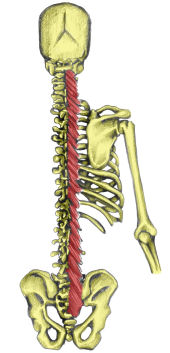
The same is true for muscles all in your body, including a very important one most of us are not even aware we possess. On either side of your spine, from the cervical spine all the way to the sacrum, are these wonderful muscles known collectively as the multifidi. Besides sounding a bit magical, the multifidi, assist in spinal rotation and support. Every time you think of standing up from a seated position, the mutlifidi are engaged without you even being aware! When you rotate your spine around its axis, the multifidi help to rotate each vertebrae group around the next, turning your entire spine into an erector set.
The most interesting fact about the multifidi isn’t when they function properly- it’s when they fizzle. After a back injury, your brain shuts down innervation to the multifidi and other spinal supporters, such as the transverse abdominus. So now, you not only have an injury to the area, but your brain is no longer talking to the muscles that help support your spine! As a result, the muscles that weren’t made to primarily support your spine are working double overtime to keep you upright, and you may feel this as tightness and discomfort throughout your body, as your muscles and joints desperately try to compensate for the loss of support.
Some Yoga Tune Up® poses that are wonderful for locating and reawakening the multifidi are Jithara Parvartonasana (revolved abdominal pose), Pasasana Twist at wall, and Tadasana. These little guys work hard to support you, so don’t forget them and give your multifidi a shout out next time you stand up!
Learn about Therapy Balls for lower back pain.
Read our post about relieving lower back pain.
Discover our lower back pain solutions.



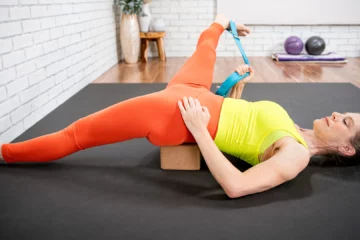

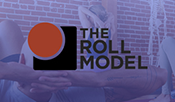



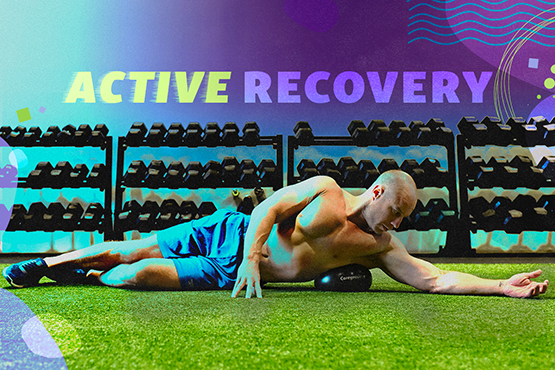
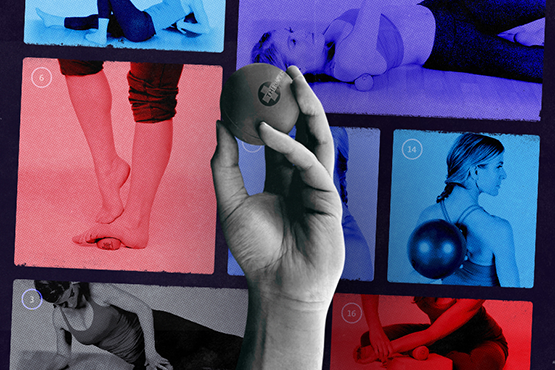
Thanks Alexandra for sharing this post. I did not know that, “To avoid pain, your brain even decreases the number of nerve signals it sends to the muscles, sometimes to almost nothing.” I do recall after injuries wondering why surrounding areas felt off-line, not as connected, to the rest of my body. Three cheers for YTU poses and Therapy balls to keep the nerve connections flowing and to keep sore muscles relaxed.
Great overview of the multifidi, and how an injury to one area of the body will affect us in other parts of the body. Thank you!
Wow, I had no idea that the after an injury “your brain even decreases the number of nerve signals it sends to the muscles, sometimes to almost nothing” in an attempt to avoid pain. This is a pretty big deal! No wonder the entire rest of the body gets so sore after and trauma a particular joint! Locating and reawakening the spinal stabilizers seems like it might be a pretty important key to recovering from back pain!
The Multifidi facilitate extension and rotation of the spine. After reading this post, I have a better understanding of what happens when someone turns their neck to the side too fast and subsequently can’t turn their head in the full range of motion. Injured and then tensed, immobilized, or unresponsive transversospinalis muscles. It’s important to practice using those muscles again to wake them back up. Great post.
Thanks for this Alex. A great reminder of how pain patterns are created. Deep muscles that form our inner “canister” are even more important as we age. As I’m nearing 60, I am trying to guard against the affects of osteopenia. Your post reminds me how important it is to keep the multifidi working like the should to help keep me upright. It’s too easy to start growing into a rounded shape in more ways than one! Love this training!
Thanks Alex! I had read your article a couple of years ago around my level 1 time. Since then I often think about the multifidi and hear your voice in my head. When opting to add this muscle in my anatomy immersion homework ‘need to know muscles’ I knew I had to revisit your blog. Thank you again for explaining it’s functions and location. It was a great refresher and also reminder how the body can shut off signals after injury. Seeing an NKT has been incredibly helpful in re-establishing neuro pathways after my various injuries and surgeries.
Thank you for your article. I’ve learned so much reading it! I love the image of the tissues forming a cast. And I knew nothing about how the brain stop talking to some muscles after an injury… Now I’ll know better what to do/recommend when/if this situation happens.
So small and so deep is so necessary, thank you Alexandra to remind us and how it serves as support when the biggest muscles are injured
We talked about this in YTU training today — how in rare cases it can be risky to roll the QL because if, for whatever reason, the multifidi (and tranverse abdominis) are not firing, the QL is probably picking up some serious slack and getting it to relax might leave the spine in a vulnerable position. Anyway, I was like “multifi..what?…” Now I know — thanks!
I have only been thinking about the multifidi in my neck, and not as a chain running the length of my spine. One more reason to incorporate twists and spinal lengthening exercises.
Hi Alex, You described my back so accurately! Fascinating how the brain shuts down to deal with the pain which then causes such a ripple effect. It takes some serious tuning in and tuning up each morning to reacquaint my body and back. I also recognize the importance of daily revolved abdominal pose in helping strengthen my multifidi.
Thanks, Alex. I feel that the multifidi are seldom addressed by instructors. I experienced a similar scenario when the brain sent signals to the opposite hip to compensate for the one that was injured while leaning in during my patient care work!
Thanks Alex! It seems the multifidi are seldom addressed. I found a similar relation to the brain sending signals to the opposite hip to compensate for pain when I am leaning in to assist my patients!
Very interesting article about the multifidi and their function in our spine. Even more interesting how the brain deals with injury by not acknowledging it and then using other muscles to take over. I think multifidi are very important to me and how my body functions and I am discovering this in the YTUTT when I tried doing revolved abdominal pose. I notice that I am taking it mostly in my core and neck. Time, I guess, to really investigate and unearth the multifidi. This is about to get good!
Great post Alex! Who knew that the mini but mighty ‘MULTIFIDI” are responsible for so many important spinal functions. We owe a lot to these muscles…some of the most underused muscles in the body. Given how much we sit all day, is it any wonder? Time to give these amazing muscles some love and attention. Come to think of it…I’ve been sitting far too long..time to do Pasasana Twist at the wall. Who wants to join me?
The body is such an amazing creation. But how sad, when we need to be aware of an area of our body after an injury, the signals can get lost. Something to be aware of when the unfortunate circumstances happen.
Vraiment très intéressant !! J’ai moi-même souffert d’entorses lombaires récurrentes en quelques années, sans même comprendre pourquoi !! Moi si sportive, je ne comprenais rien de ce qui m’arrivait ! Je sentais mon dos instable et beaucoup plus faible, j’étais constamment en protection par peur de me blesser à nouveau jusqu’à ce que ma professeur de YTU me parle du Multifidus ! Et à la lecture de cet article, je comprends le pourquoi de la chronicité maintenant !
De mon côté, je crois que c’est à vie que j’aurai à renforcir ces muscles et les maintenir actifs pour éviter les récidives ! Je dois être constamment vigilante, car dans les moments de fatigue, tout de suite je ressens que mon dos fatigue rapidement.
Encore davantage de YTU à venir depuis ma formation niveau 1 de professeur !! 🙂
Interesting, I will apply this concept to one of my clients. Love it.
The body works in such interesting ways, and this is yet another example of that. I didn’t know that the multifidi fizzled out after a back injury. It definitely makes me reflect on times that I’ve hurt my back (I’ve had a couple bad spasms that really set me back). Thanks for including some pose suggestions to wake the multifidi back up. Very helpful and useful because so many people suffer from low back pain or have hurt their back at some point or another.
Wow! The part about the brain shutting down the multifidi other spinal supporters as a result of injury isn’t necessarily new to me, but the WAY you articulated it makes so much more sense than the way I’ve heard it before. This is the path your brain, and therefore your muscles can take after an injury in order to avoid one pain only to bring on another by overusing and inappropriately activating certain muscles groups when messages to the appropriate groups have somehow gotten archived.
Great article Alex. It is intriguing how the body protects itself following an injury. Increasing our proprioception and focusing on correct biomechanics following injury are sure to assist in the healing process and I am thankful every day for discovering YTU. Thank you for pointing out the exercises to help strengthen these often forgotten about important muscles with exercises such as Jithara Parvartonasana. I will be sure to zero in on my Multifidi and thank them next time I do this exercise!
I enjoyed reading all the comments below and I love how your blog and the level 1 training got everyone thinking about their Multifidi, including myself.
This is a great insight on our hidden muscle that was way underated. We always talk about the spinal cord, but not much emphasis on the Multifidi. The revolving abdominal YTU pose is a great one to help strengthen this muscle. Not only it stregthen the “popular” muscles, the QL and all the abdominal muscles but also the multifidi too. Great article Alex!
I love how Yoga Tune Up awakens and recruits the whole body to work in unison. Twists in yoga have always been my least favorite poses, but after rolling out my erectors and multifidi on the YTU Therapy balls they feel completely different and enjoyable.
I learned about my weak multifidi about 15 years ago when I was rehabbing my back. I don’t recall my PT ever explained this phenomenon of the brain shutting out injured parts of the body to avoid pain. I really enjoyed finding this post, not just for the info on how the body protects itself after injury, but also for the list of Yoga Tune Up poses I can do to wake up and strengthen my multifidi
Excellent info on these supper important back extensors!!! tiny yet powerful, they are. Great highlight pointing out that there may be a shift in the communication neurologically to the mutifidi nor the TA after injury. The body’s efforts to protect itself initially are not always beneficial in the long run… We want everyone- all muscles awake and prepared!!
I appreciate all of you blogs about back injury. Suffering from back pain myself its great to know what I can do to locate reawake the multifdi. Count on me practicing these poses…Jithara Parvartonasana (revolved abdominal pose), Pasasana Twist at wall, and Tadasana (my new Tadasana 😉
This is an enlightening pose, Alex! Until YTU Level 1, I hadn’t even heard of the multifidi! Reading this was so helpful to know and understand the function of these important muscles. It also helped to learn which YTU poses help to strengthen the multifidi. I don’t think I will ever forget where they are and what they do. I also know understand how the body protects itself after an injury and what the ramifications are for that. Thank you!
I had no idea about any of it. I’m definitely guilty of giving all the glory to the erector spine, but now I’ve got my anatomy book out to sort it out thanks to you 🙂
Thank you for this insightful post! That’s such a great reminder that it’s not just the more “obvious” superficial muscles that are working when we twist like the internal & external obliques. Those deeper, more core muscles like the multifidi also play a huge role in rotational movements. I’ll remember that the next time I practice Jithara Parvartonasana.
Going through Pilates training, I realized how important the multifidi muscles are for core stability. Thank you for all the other information you shared about the muscles.
I love reading about the multifidi. I learned that I needed to strengthen them about a few years ago and have noticed a big difference in my core strength and stability. It’s a great feeling when you can feel your postural muscles supporting you and the compensatory patterns start to diminish.
Love, love the multifidi! Have been exercising them in classes this past week, heavily infused with several Yoga Tune Up exercises :). Strengthening both sides of the body, alone with the obliques, QL, lats and serratus, includes igniting and stimulating the multifidi. Love all the asymmetrical YTU postures! Built the classes to peak with Assymetrical Twisted Triangle. Have been getting good body feedback from the students, in class, right after class, and seeing them days later, as well as in my own body 🙂 Ahh so much YTU goodness to be shared!
I only found out about the multifidi this week. The erector spinae get all the glory back there, but I have a new appreciation for these muscles, especially as they stabilize my back during all those core exercises Jill loves! Thanks for the informational post — I had no idea that the brain throws an injured part of the body under the bus post injury. Thank God for YTU balls to remind the brain that both brain and body are in it for the long haul.
Wow, the multifidus muscles are serious! Being such a small series of muscles, the power and support these muscles give to the spine canot be overlooked! Thank you for sharing that after a back injury to do rotation exercises that reawaken the multifidi is so important for a healthy strong back.
Hi Alex, This reminds me of Jill telling the story of a YTU teacher from her training in January that had lost sensation in her knee due to multiple surgeries, and how using the therapy balls, she has now regained sensation all around her knee. I loved this example you shared on this same topic, because I had made a mental note to remember to seek more information out on this idea! I had no idea this was possible with self care techniques and still hope to explore more about this. My husband said just last night on the phone that he has a little tweak in his shoulder joint (I predict it is an impingement!) and his response was “oh, I’ll just rest it for a couple of weeks and take some Advil.” I suggested he use the new Alpha Twin set to massage our his upper arm and upper back and to use the a small therapy ball to roll out his pectoralis muscles every day to see if that doesn’t also help ease up the pain. I explained to him that he needs to keep the communication alive in his body and not allow it to shut it down. This blog post helped me to inspire him to participate in his healing and stay connected to his arm and shoulder, rather than disconnect to it. Thank you.
Heck ya! So glad you brought up Multifidi! They are such hard workers! If these puppies are weak, we are so much more prone to spinal injury, which could easily turn into disc problems and chronic pain. I love safe twisting for the body! so glad you brought up these muscles, so many people forget about them!
They may be small, but you are so right in pointing out how mighty the multifidi are! Thanks for your terrific explanation of how our bodies can react to injury by casting and dulling pain signals. After experiencing a few back ‘castings’ I’m all too familiar with the stiffening that creates lack of movement and then the other muscles of the back having to man-up and do way more than they normally would do. One of the most fascinating things I’ve learned through YTU is the focus on DE-rotation, not just rotation. I’ve been able to gain more strength in my multifidi, rotatores, erector spinae group and other back muscles by concentrating on derotation, a tool that has proven very effective for my back health.
The big, beefy “mover” muscles get so much more acclaim then our tiny, but oh so crucial stabilizers! The multifidi are a prime example – who ever talks about them? Thanks for bringing them to the spotlight Alex 😉
We don’t even have to go to “drastic measures” like a pose to engage the multifidi. Passively flexing the spine (like slouching at our desk) turns those little guys off – so sitting up, with a tubular core, will turn them back on! Or actively anteriorly tiling your pelvis to feel them contract in the lower lumbar, down onto the sacrum. Or try rotating your spine while sitting (locked pelvis); slowly and deliberately rotating one vertebra on top of the other, attempting to feel the action of each single multifidus muscle. Poses are great too; just don’t forget to engage those guys all day long!
We just reviewed Pasasana at the Wall and Jithara Parvatonasana in YTU Level 1 training today and I can promise, I won’t forget these magical little guys anytime soon. Wow! As a yogi who suffers chronically from back pain, I am constantly on the search for new information and ways to strengthen, educate, enlighten within my apparently and obvious blind spots. You’re blog got me thinking as I have heard of the multifidi, but not much about them. To me, it makes sense as a survival instinct, to lessen the messages to/from the brain and the injured area after a certain amount of time. Do you know how the multifidi are effected either above or below an injury / lessoned communication spot? For example, if a trauma happened around L3, would the lower L’s suffer from the same lack of communication from that muscle and lessened stability from the surrounding muscles, or does it stay localized to the injured spot? Thank you for the information!
Wow, lots of wonderful discussion in this. I really like Mado’s comment regarding the use of either side of the body to wake up this muscle. I do this with the kids that I teach and a girl that has 30% curve of her thoracic spine. I like the detail about adding the forearm for stabilization in a slightly higher back bend. Also the great pose suggestions in the actual article. And I am excited to read the study that you linked. And I wonder why this isn’t more common knowledge. I have gone through two rounds of PT for lower back issues as well as two rounds for TMJ/neck issues. Seems important.
Just learned about the multifdi after a constant pain in what I thought was my lower back from doing standing head to toe wrong in Bikram yoga for 30 days straight! My chiropractor adjusted C1 and C2 and away went my back pain!
I also love my multifidi because they nutate my over-mobile sacrum and help prevent S-I joint pain.
When the brain stops talking to muscles post-injury, will standard muscle awakening practices reopen the dialogue?
A great article pointing out that when we injure ourselves we hurt other places too. I will mention these little muscles the next time I teach revolved abdominal pose.
So happy to find this post about the T.A. Multifidi connection. Becoming aware of this connection and then learning to activate and strengthen it enabled me to get relief from 20 years of chronic lower back pain (the result of highly aggressive adjustments in Mysore). The combination of ‘Tubular Core” and the use of Tune Up Balls supports the stability and deep tissue work I need to remain active and largely free of debilitating stiffness and pain.
Referring back to the first two comments on this post, the first person mentioned locust, cobra, fish, and camel as being great for the multifidus while the second person pointed out that backbends are contraindicated for several back conditions. I imagine that the original poster was referring to preventative use of these poses rather than recommending them for acute conditions. It is also true that an aggressive approach to backbends can lead to injury as the second poster pointed out. However, when practiced with respect there is no doubt that backbends can also be incredibly healing.
There is a version of locust that is gentle enough for most people to benefit from, even with back conditions, that beautifully targets the multifidus. Laying prone with shoulders flexed but elbows bent, lift one arm and the opposite leg away from the ground just an inch or two. Holding the two sides for an equal length of time, alternate back and forth until the muscles tire. While technically a backbend, the extension of the spine here is so mild that it is safe for all but the most acute conditions. The other benefit of this exercise is that by engaging one side at a time, it shines a light on the imbalance of the musculature of the spine from right to left and helps to balance it out.
yes ! that why i so love self massage and the yoga therapy balls to help get blood flow back and massage out the scar tissue after an injury so that the body and re-connect and function properly again!
OK, maybe the text and visual will finally make the name and location of these little muscles stick in my brain! This also serves to remind me to offer more information to my students about the role of the smaller muscles in treating pain. Even if they don’t fully understand the scientific specifics of the multis, simply offering a mind’s eye picture of location (spinous processes of all vertebrae top to bottom) and function (rotation and extension of the vertebral column) will enhance their understanding of the intricacies of how their body moves.
Alex! You brought me back to Gill’s dissection lab thank you for that, I’m loving being in YTU training with you! That said, I so appreciate the visual here and for clearly articulating how the body’s trauma response can become “embodied.” But who knew the brain shut down part of the quadratus lumborum and fizzles like alka-seltzer! Thanks for allowing us all to benefit by further seeing how we must recognize the causes of our symptoms in order to fully appreciate their functional correlates.
I read something about the visual assessment (multifidi) and found this very interesting. People with an excessive lumbar lordosis often have short erector spinae, quadratus lumborum and multifidi muscles. By asking my client to flex forward at the hips I can determine whether the lumbar spinal segments are stuck in a lordotic posture or if they can flex with respect to each other. Clients who maintain a lumbar lordosis as they flex forward have short and inextensible (non-lengthening) erector spinae, quadratus lumborum, and/or multifidi muscles. When there is a more local inability to flex, it is more likely caused by a purely multifidus shortness and/or high tone.
Fascinating! Multifidi also have a tendency to shrink within 24-hrs of an onset of a severe back pain or injury, so very important to reconnect with that muscle and get it working again and then condition it to properly turn on when necessary as with small rotational movements of the spine and also small side bending movements. It takes patience, but will pay off 🙂
WOW-I never knew that after a back injury, your brain shuts down innervation to the multifidi and other spinal supporters, such as the transverse abdominus – that your brain is no longer talking to the muscles that help support your spine which causes the muscles that weren’t made to primarily support your spine are working double overtime to keep you upright. Miss Ellis – you are the new thing I learned today!!! Great post 🙂
Thank you Alex for explaning how the dynamic of proprioception and nociception work specifically in the spine. I have direct experience with this in my thoracic spine at T11-12. Childhood trauma had left this area numb the touch but also chronically painful when abused through poor posture. Using the therapy balls in your class has brought feeling back into this area as well as greater awareness of my postural dynamics. XO
Everything has a purpose – no matter how small they might look, their purpose may be mighty – like the multifidi. Thanks for sharing!
Helllloooooo! I’m a huge fan of the multifidi (along with gastrocnemius, I love saying multifidi) and was stoked to see your article giving them some love. It is truly amazing to me how much we take for granted the immense amount of work these guys do to support our spine. I think the info you provided about the compensation that happens when there is a back injury is especially important to relay to our clients who are experiencing such a situation. It is super important the we help them reawaken the multifidi through ball rolling and YTU poses! 🙂
Hi Brian, great question! I found a review that summarizes a few studies out there, but it comes down to nociception (pain) vs proprioception (body awareness). When the nociceptors are on, your proprioceptors are not, and after injury, genes are turned on that increase the amount of nociceptors and their activity. After injury, your body begins to increase the amount of pain signals that your brain is receiving because that is how we know we are hurt and to respond or favor that limb, area etc.
A better way to word this would not be that the brain shuts down innervation to the area, but shifts its focus into pain and alerting your consciousness that there is a tissue injury. Without an increase in proprioception and focus on biomechanics, your nociceptors remain active, even after the tissue has healed, which can result in a chronic pain situation. Hope this helps!
http://www.logan.edu/mm/files/LRC/Senior-Research/2011-Apr-08.pdf
Interesting. The concept of the brain shutting off nerves to an injured area to me sounds so counterintuitive. I understand that our bodies do an unbelievable job at trying to avoid pain, but isn’t pain an important discussion that we have with a damage a body part? Why would our brain try to stop talking? Can you please forward me a journal article to support this? I’d like to know more about this concept. In regards to the multifidi, thanks for the poses to help slap it back awake!
I have always said, “I’m not a twister”. I avoid moving deep into twisted poses by telling myself that I have a limited range of motion, I’m okay with that in my practice. But now that I’m putting the body together, rather than looking at each separate part as in an anatomy book, I’m realizing that I perhaps have weak core muscles that are passing the buck onto the mulifidi. These muscles are probably so dense from continuous contraction, that’s no wonder it hurt’s to stretch them while moving into deeper twists.
Fascinating!!! My client had a serious accident about 6 years ago. She cracked her sacrum. When we were doing the balls today for the first time on her back she told me she couldn’t feel the right side of her back. That it felt completely numb. This makes so much sense.
interesting first paragraph as i heard, resource forgotten, that after an injury, your brain has a hard time of letting go so that you are more reluctant to move on from it. my forgotten resource said as an example of you sprained your ankle, your brain won’t let you walk on it normally even after you are healed for the fear of injuring it again. thank you for the enlightenment.
Adding Tune Up Tadasana to a repertoire of back care exercise offers a save and effective way to build up strength and is a great toning pose for the whole core and spine.
I’m learning so much about the mutifidi muscles here on awesome yoga tune up blog site. Thank you for sharing. It makes more sense as some of my clients with back pain from old injuries and this article was like a switch that wento off in my head. to understand why and how other muscles in the body are effected by these postural supporting muscles being tuned out. Time to Tune in and wake them up. Thank you for the insiring article!!!!
Yikes! There is so much to know about when it comes to this amazing body! Having lived with a diagnosis of spodololthesis for 25 years, I am always interested in learning how to maintain a healthy back and especially to condition muscles that may have shut down from pain avoidance. I did not know about the multifidi, but I agree that the name sounds magical, and with your advice of which postures to practice to keep them healthy and active, I hope to be more mindful of them. I think it is wonderful that we are learning how to heal injuries and decrease pain through yoga and therapies like Yoga Tune Up.
I’m going to disagree with swagata: “locust , cobra , fish pose, and camel pose…..if you incorporate these poses in ur daily practice along with other poses I don’t think you’ll be ever complaining about ur bad back health.” There are a number of conditions of the back, such as osteoarthritis (very common) and ankylosing spondylitis which will be extremely irritated by back bends, especially locust and camel. In many cases, long-term yogis develop symptoms of osteoarthritis in the neck and lower back because of repeated backbending.
I do agree with u about the relevance and importance of these small yet so poweful muscles.These series of uniquely designed muscles attached to the spinal column gives great support to the spine by taking the pressure off the vertibral discs so that our body weight can be evenly distributed all along the spine. These muscles keep the spine straight and stabilize the spine to a great deal. The most interesting thing is that the muscles get activated by starting contraction even before any action is carried out in order to protect our spine from any sort of injury. So I’d say if you don’t want to complain about back pain it’s high time to give some attention to these small yet powerful muscles. And the best way to say hello to these poweful guys are asanas like locust , cobra , fish pose, and camel pose…..if you incorporate these poses in ur daily practice along with other poses I don’t think you’ll be ever complaining about ur bad back health.